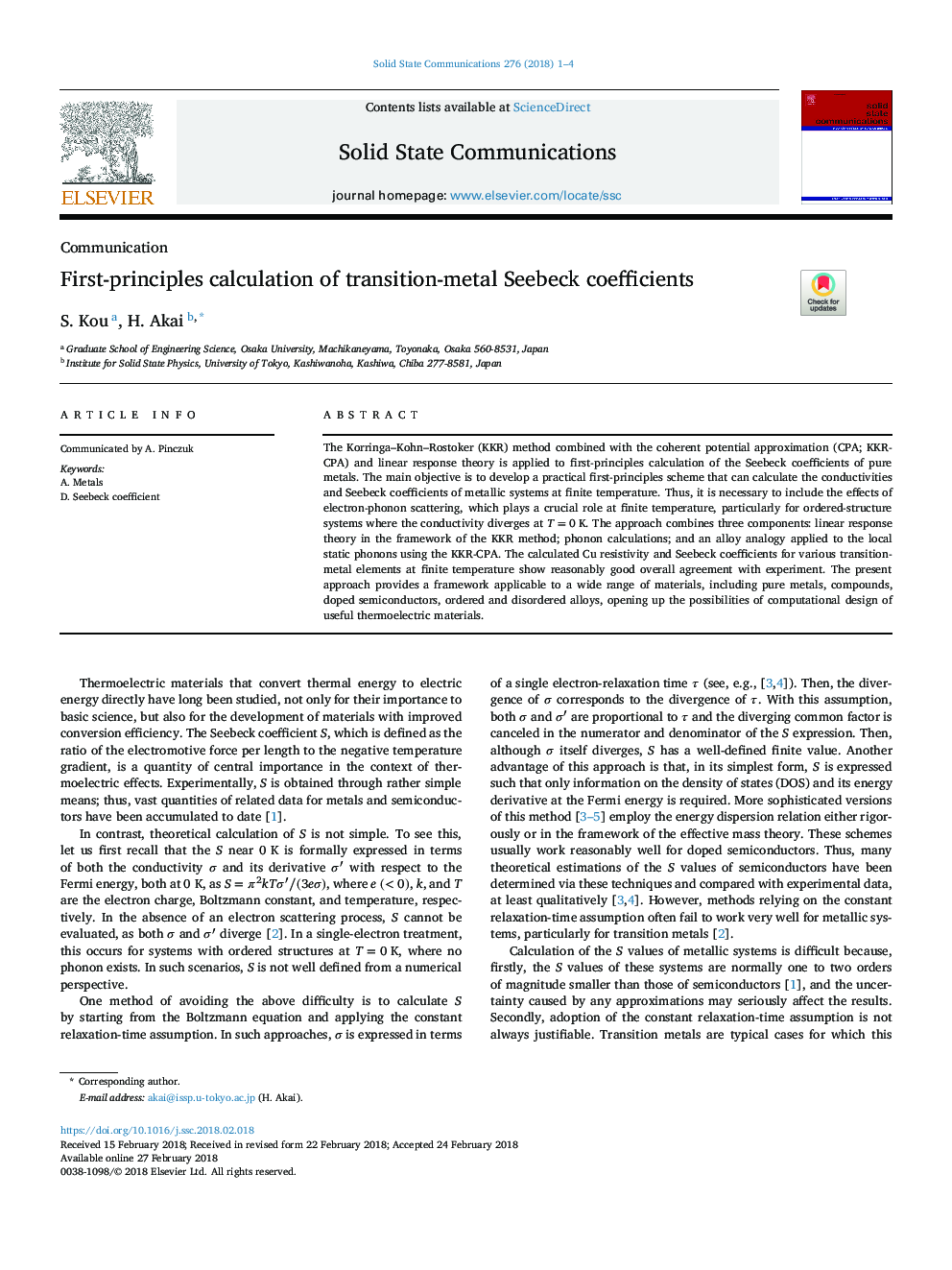| Article ID | Journal | Published Year | Pages | File Type |
|---|---|---|---|---|
| 7987812 | Solid State Communications | 2018 | 4 Pages |
Abstract
The Korringa-Kohn-Rostoker (KKR) method combined with the coherent potential approximation (CPA; KKR-CPA) and linear response theory is applied to first-principles calculation of the Seebeck coefficients of pure metals. The main objective is to develop a practical first-principles scheme that can calculate the conductivities and Seebeck coefficients of metallic systems at finite temperature. Thus, it is necessary to include the effects of electron-phonon scattering, which plays a crucial role at finite temperature, particularly for ordered-structure systems where the conductivity diverges at T=0K. The approach combines three components: linear response theory in the framework of the KKR method; phonon calculations; and an alloy analogy applied to the local static phonons using the KKR-CPA. The calculated Cu resistivity and Seebeck coefficients for various transition-metal elements at finite temperature show reasonably good overall agreement with experiment. The present approach provides a framework applicable to a wide range of materials, including pure metals, compounds, doped semiconductors, ordered and disordered alloys, opening up the possibilities of computational design of useful thermoelectric materials.
Keywords
Related Topics
Physical Sciences and Engineering
Materials Science
Materials Science (General)
Authors
S. Kou, H. Akai,
